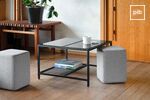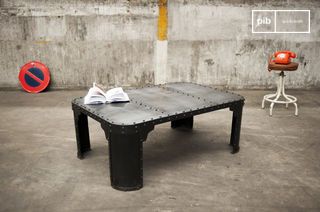Black dining tables
Black dining tables provide a strong contrast in the dining room. The dark hue gives structure to the space while enhancing the surrounding materials. A black dining table blends equally well into sober compositions and more contrasting environments. Depending on the matt, satin or textured finish, light is absorbed differently, altering the perception of volumes. Whether in stained wood, metal or ceramic, it quickly becomes the fixed point around which the interior is organized.
read more >Filters
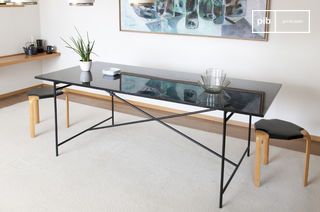
Black marble tableThorning
£1925 £1730-10%
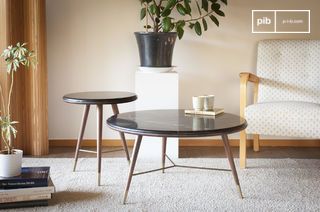
Black marble coffee tableSivart
£930 £840-10%
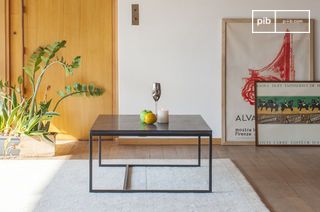
Black marble coffee tableAvedore
£605 £540-10%
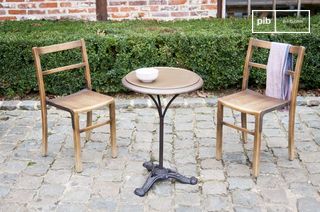
Round bistro table wood and metalVaiana
£480 £430-10%
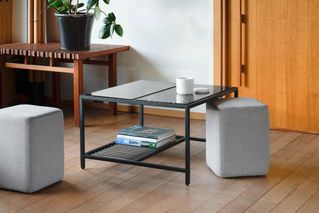
Marble coffee table with poufsNoora
£680 £615-10%
10 festive days
10% off our tables and consoles
Welcome your guests in style · Limited stock
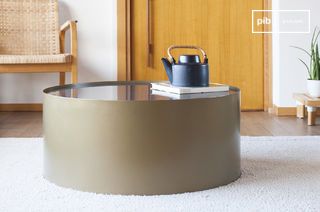
Round marble coffee tableDickinson
£1210 £1090-10%
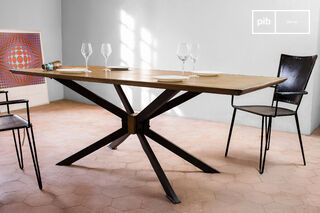
Brass dining tableLiverpool
£1820 £1640-10%

The black dining table: a visual focal point
Choosing a black dining table introduces a dense, legible surface into a living space. This color absorbs light and reduces visual dispersion, allowing the eye to refocus on the table itself. This is particularly useful in open or shared spaces, where the furniture can blend into the overall scheme. Here, black acts as a visual cue, often in contrast to light-colored walls, wood floors or fabric seating.
Black comes in several finishes: matte, satin or textured. A matte finish softens reflections and gives the surface a certain neutrality. It's ideal for sober, low-key ambiances. A satin finish introduces a slight play of light, without excess. As for textures (brushed, veined, granulated), they break visual continuity, creating an active yet discreet surface. The choice depends on the role you wish to give the table in the overall composition.
Available materials and possible combinations
The structure of a black dining table can be made in a variety of materials, depending on the desired rendering. Stained or painted solid wood gives a feeling of density and stability. It is suitable for interiors where we wish to introduce controlled warmth. Black powder-coated metal is visually finer, and is often used for legs to preserve the lightness of the lines. Black ceramic, sometimes veined or marbled, reinforces the table's mineral character, particularly when it rests on a lighter base.
The tabletop can be solid, extendable or combined with glass elements, depending on use. Some models play on the juxtaposition of materials (ceramic top, wooden base, metal reinforcements) to articulate functions without imposing a rigid reading of the whole. This allows the table to be adapted to multiple configurations: open kitchen, formal dining room, dining area adjoining the living room.
The black dining table is easily combined with seats in different materials (light oak, brown leather, natural rattan, raw metal) depending on the desired ambience. Black does not dominate: it frames, balances and supports the composition. So it's possible to vary styles without creating dissonance.
Everyday use and care
A black dining table meets practical needs while ensuring aesthetic legibility. It lends itself equally well to everyday meals and entertaining moments. Extendable models offer flexibility of use without altering the legibility of the overall shape, thanks to discreet systems or integrated mechanisms.
In terms of maintenance, black has specific features: it marks light stains less, but can make dust or greasy marks visible, depending on the finish. A matte black dining table requires regular cleaning with lukewarm water and a soft cloth, without abrasive products. Satin or textured finishes are more tolerant, but require appropriate care to preserve the original appearance over time.
The stability of colorations is generally ensured by surface treatments resistant to UV and temperature variations. This allows these tables to be installed close to openings, without the risk of tarnishing or premature deformation.
Choosing a black dining table allows space to be structured without rigidity. Thanks to its visual neutrality, it blends in with a variety of environments, yet takes on a central role. It allows a clear reading of the layout and flexible associations with other materials or colors.
